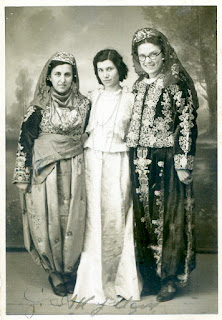“It is part of morality not to be at home in one's home.”
Edward Said
His central thesis of Orientalism being that the Orient - specifically the Islamic Middle East - was a European invention; Edward Said had no shortage of evidence to make his point. Descriptions of Constantinople by 18th and 19th century quickly become tiresome in their use of every cliché available. It was dirty of course, sinister, bustling, primitive and so on, and its allures belonged to the senses. One smelt, one heard, one saw, inhaled, drank in and so forth, etcetera. Describing a wizened Jewish book dealer in the bazaar or a fat, lugubrious merchant was enough to convince readers the author had actually been in his presence and probably smoked opium in a dingy bordello.
Said was most interested in literature and didn’t consider photography, which was a small oversight because European photographers generally sought to confirm all the stories were true. The beggars were grotesque, the streets dangerous mazes, the women sultry and mysterious. It was all grist for the mill and no one was about to deny the proof that photographs laid before their eyes. Orientalism was the first book to give intellectuals the base to really shift defence into an attack. These days, ‘orientalist’ is a slur with a different resonance in Istanbul than it has in Western Europe.
But there’s a problem. If the Orient was really a creation motivated by European hegemony, where do the photographs employing Orientalist imagery that Turks took fit in? Are they evidence that people were so subjected to Western ideas they could only imagine their culture according to European rules, or was Said’s theory blindsided by its own vehemence? Could self-deprecating humour have nothing to do with what others thought but be a part of how people regarded themselves? Could it also be a form of resistance?
If the image of Turks as lazy, dishonest, saturnine and slippery didn’t originate with the people themselves, like a lot of cultures they have always been their own harshest critics. That said, the arsenal Turks draw on to make fun of themselves is the same that Said railed against; Western stereotypes. The arrival on stage or screen of an obese slob with a flourishing moustache is always the signal for the laughs to begin. The appearance of his girlfriend, sultry and conniving in her belly dancing costume, makes the performance a real riot. It’s dumbass humour for sure but the point is, if what people were laughing at was, as Said would apparently suggest, two European stereotypes entrenched with racist attitudes, then logically Turks are incapable of discerning when they are being mocked. If instead they subverted that image then what they are laughing at is something of their own creation. Edward Said was noted for several things but not his sense of humour.
All the photographs in this post show Turkish people making fun of the Orientalist idea. In one small way or all of them challenge Said’s thesis.
 |
| ORIENTALISM 2 |





Seems to be a good history lesson! which was not thought in school life. thanks for sharing!
ReplyDeleteLove letters
Great :) thanks
ReplyDelete